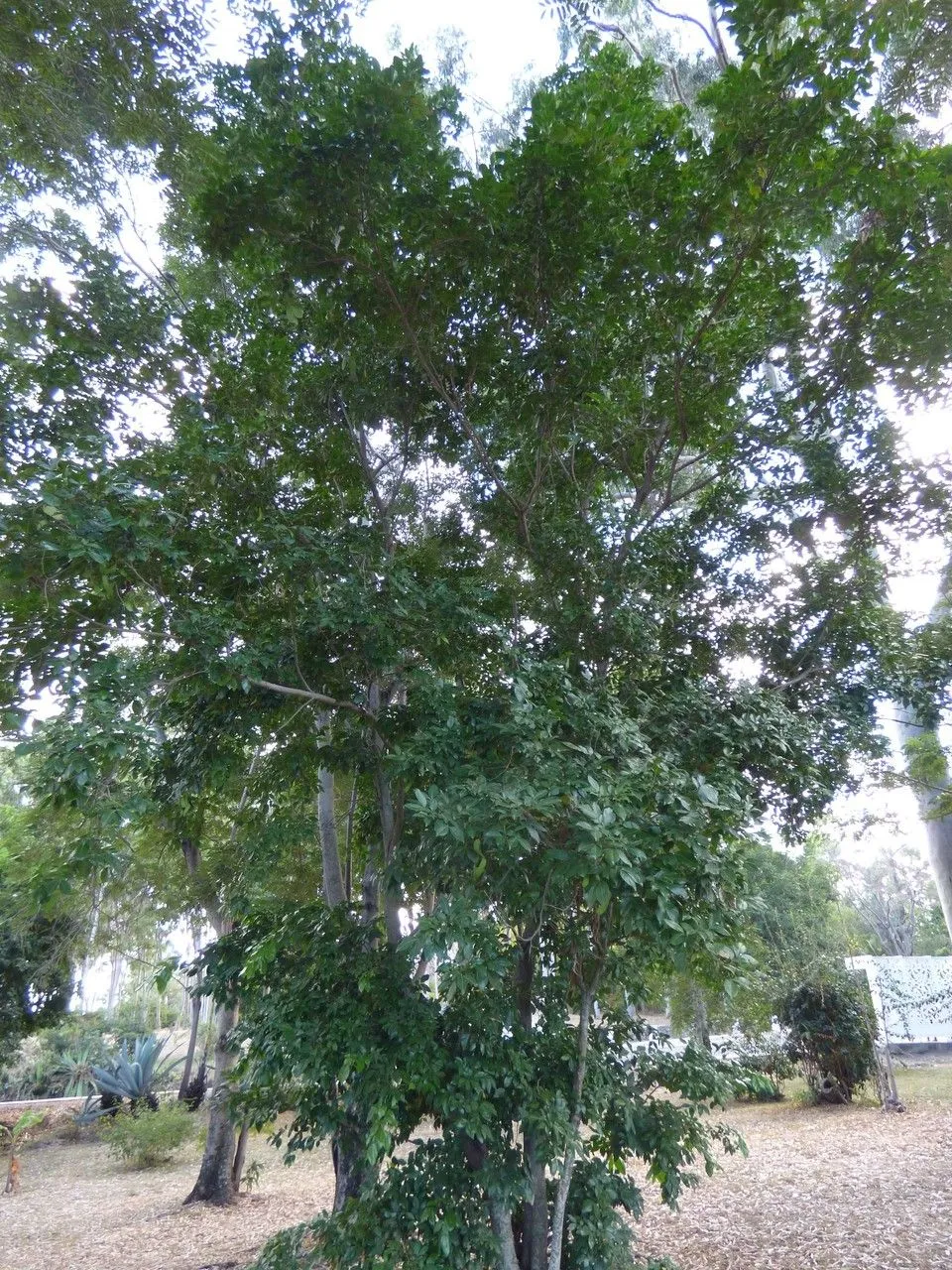
Author: (Sw.) Willd.
Bibliography: Sp. Pl., ed. 4, 4: 1018 (1806)
Year: 1806
Status: accepted
Rank: species
Genus: Inga
Vegetable: False
Observations: W. & S. Mexico to Trop. America
The Sacky sac bean, known scientifically as Inga laurina, is a remarkable species belonging to the Fabaceae family. First described in the fourth edition of “Species Plantarum” by Carl Ludwig Willdenow in 1806, this plant bears both historical and botanical significance.
The Sacky sac bean is indigenous to a wide geographical area extending from Western and Southern Mexico through to the tropical regions of America. This broad habitat range highlights the plant’s adaptability to diverse environmental conditions prevalent in these regions.
Characterized by its compound leaves, pinnate with numerous leaflets, Inga laurina thrives in tropical climates where it often contributes significantly to the local ecosystem. The canopy formed by its leaves provides essential shade and habitat for various forms of wildlife. Additionally, like other members of the Fabaceae family, it plays a crucial role in soil health by engaging in nitrogen fixation, thereby enriching the soil with this essential nutrient.
The flowers of Inga laurina are typically small, white, and arranged in dense clusters, which later give rise to its distinctive seed pods. These pods are often elongated, housing the plant’s seeds which are propagated through natural processes and by local fauna.
Due to its ecological importance and widespread presence, the Sacky sac bean is a valuable species for both research and conservation efforts. Its role in nitrogen fixation and its contribution to biodiversity in tropical ecosystems underscore its significance beyond its botanical curiosity.
Thus, Inga laurina, or the Sacky sac bean, stands as an exemplar of the intricate and interdependent relationships within tropical ecosystems, while its adaptation capabilities continue to intrigue botanists and ecologists alike.
Por: ingaí, ingá-branco, ingá-chichi, ingá-chichica, ingá-cururu, ingá-da-praia, ingá-feijão, ingá-lagarta, ingá-mirim, ingá-pequeno
Eng: sacky sac bean, red wood
En: Sacky sac bean, Red Wood
Pt: Ingaí, Ingá-branco, Ingá-chichi, Ingá-chichica, Ingá-cururu, Ingá-da-praia, Ingá-feijão, Ingá-lagarta, Ingá-mirim, Ingá-pequeno
© copyright of the Board of Trustees of the Royal Botanic Gardens, Kew.
© copyright of the Board of Trustees of the Royal Botanic Gardens, Kew.
© copyright of the Board of Trustees of the Royal Botanic Gardens, Kew.
Taken Jun 29, 2017 by Hugo SANTACREU (cc-by-sa)
Taken Jun 29, 2017 by Hugo SANTACREU (cc-by-sa)
Taken Jul 27, 2021 by Remy Branco (cc-by-sa)
Taken Apr 29, 2021 by Fernando da Luz Schmidt (cc-by-sa)
Taken Dec 7, 2021 by Thiago Flores Flores (cc-by-sa)
Taken Feb 21, 2022 by José Carlos (cc-by-sa)
Taken Sep 29, 2021 by Oliveira Vander (cc-by-sa)
Taken Sep 23, 2022 by Joseph ONIER (cc-by-sa)
Taken May 15, 2021 by Henrique (cc-by-sa)
Taken Dec 2, 2019 by Anne Hamann (cc-by-sa)
Taken Feb 14, 2021 by JR SP Saturno (cc-by-sa)
Taken Sep 23, 2022 by Joseph ONIER (cc-by-sa)
Taken Apr 29, 2021 by Fernando da Luz Schmidt (cc-by-sa)
Taken Apr 29, 2021 by Fernando da Luz Schmidt (cc-by-sa)
Taken Jun 20, 2021 by Karine Jaffory (cc-by-sa)
Taken Feb 6, 2022 by Carlito Junior (cc-by-sa)
Taken May 15, 2021 by Henrique (cc-by-sa)
Taken Jun 29, 2017 by Hugo SANTACREU (cc-by-sa)
Taken Jun 29, 2017 by Hugo SANTACREU (cc-by-sa)
Taken Jun 29, 2017 by Hugo SANTACREU (cc-by-sa)
Taken Oct 26, 2021 by Dollis Caio (cc-by-sa)
Taken Dec 7, 2021 by Thiago Flores Flores (cc-by-sa)
Taken Apr 29, 2021 by Fernando da Luz Schmidt (cc-by-sa)
Taken Dec 20, 2010 by AMAP Lab – Guyane 2022 (cc-by-sa)
Taken Dec 20, 2010 by AMAP Lab – Guyane 2022 (cc-by-sa)
Taken Dec 20, 2010 by AMAP Lab – Guyane 2022 (cc-by-sa)
Taken Dec 20, 2010 by AMAP Lab – Guyane 2022 (cc-by-sa)
Taken Dec 20, 2010 by AMAP Lab – Guyane 2022 (cc-by-sa)
Growth form>: Single Crown
Growth habit>: Tree
Ph maximum: 8.5
Ph minimum: 6.0
Family: Myrtaceae Author: (F.Muell.) K.D.Hill & L.A.S.Johnson Bibliography: Telopea 6: 402 (1995) Year: 1995 Status:…
Family: Rubiaceae Author: Pierre ex A.Froehner Bibliography: Notizbl. Bot. Gart. Berlin-Dahlem 1: 237 (1897) Year:…
Family: Sapindaceae Author: Koidz. Bibliography: J. Coll. Sci. Imp. Univ. Tokyo 32(1): 38 (1911) Year:…
Family: Asteraceae Author: A.Gray Bibliography: Pacif. Railr. Rep.: 107 (1857) Year: 1857 Status: accepted Rank:…
Family: Fabaceae Author: Medik. Bibliography: Vorles. Churpfälz. Phys.-Ökon. Ges. 2: 398 (1787) Year: 1787 Status:…
Family: Aspleniaceae Author: (Cav.) Alston Bibliography: Bull. Misc. Inform. Kew 1932: 309 (1932) Year: 1932…